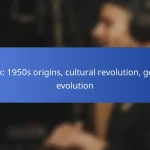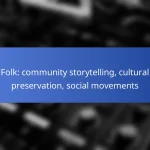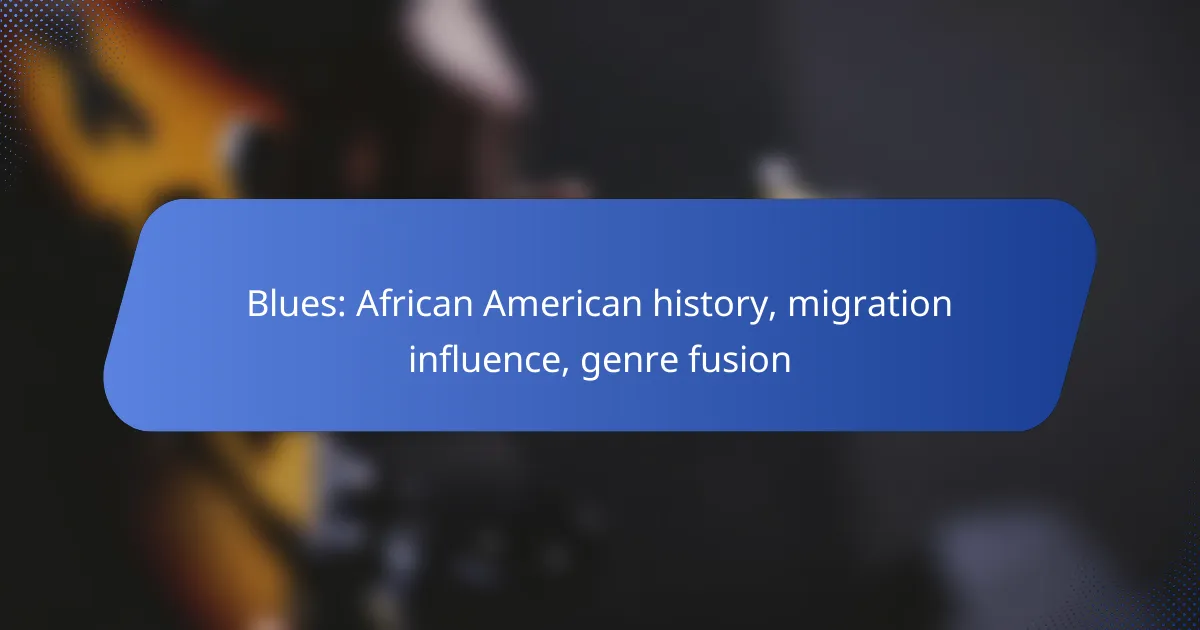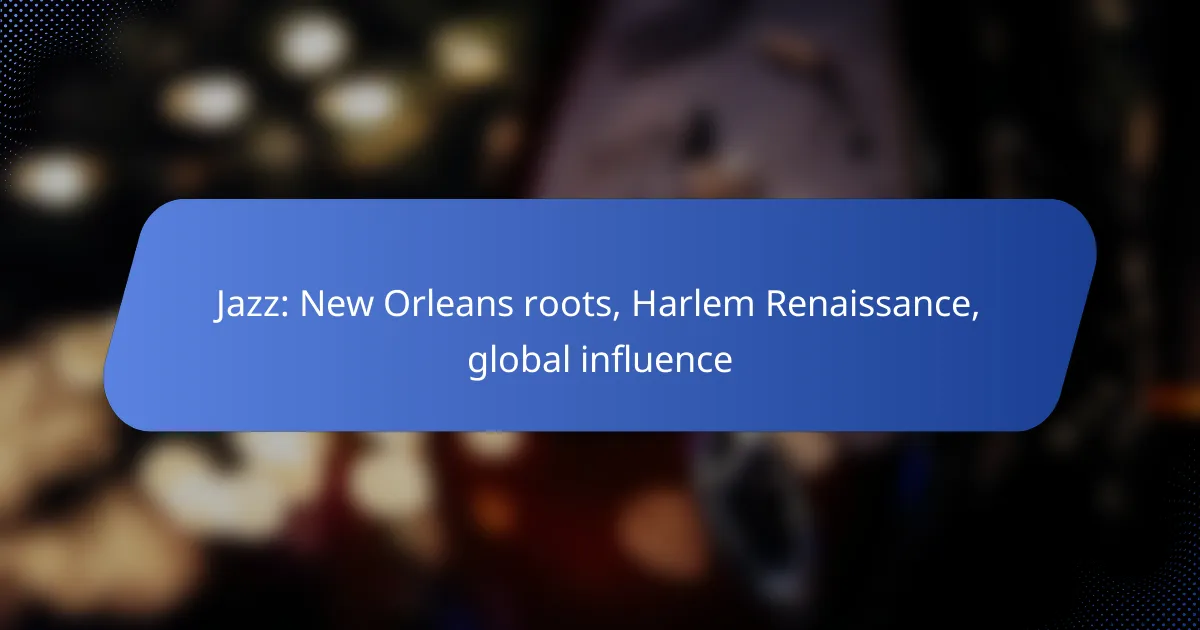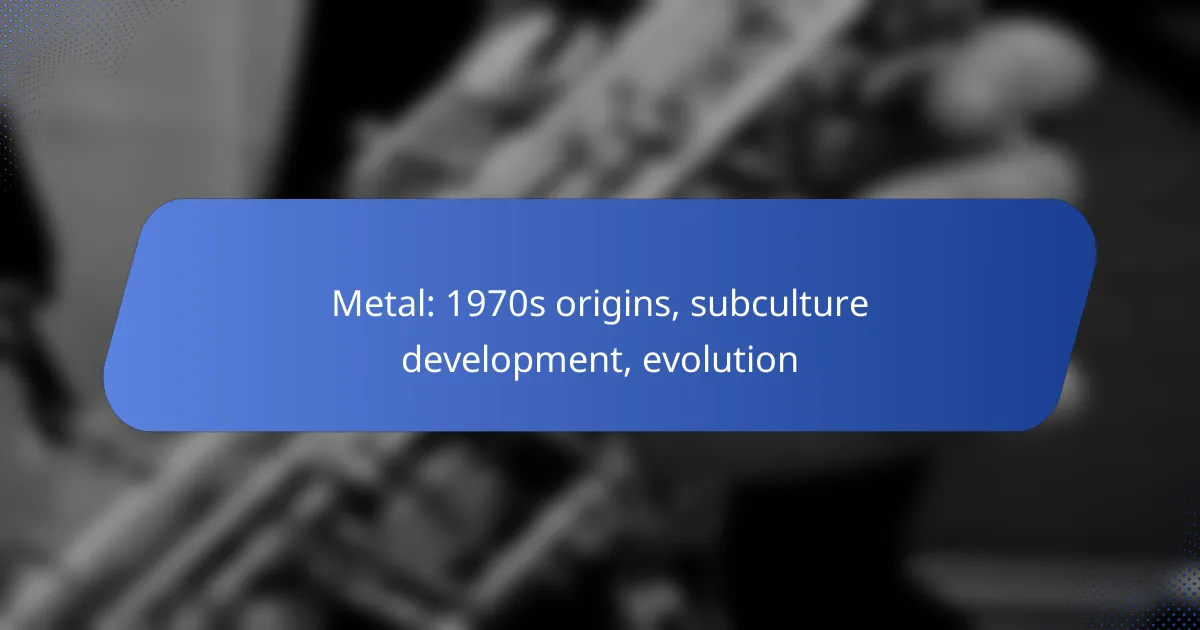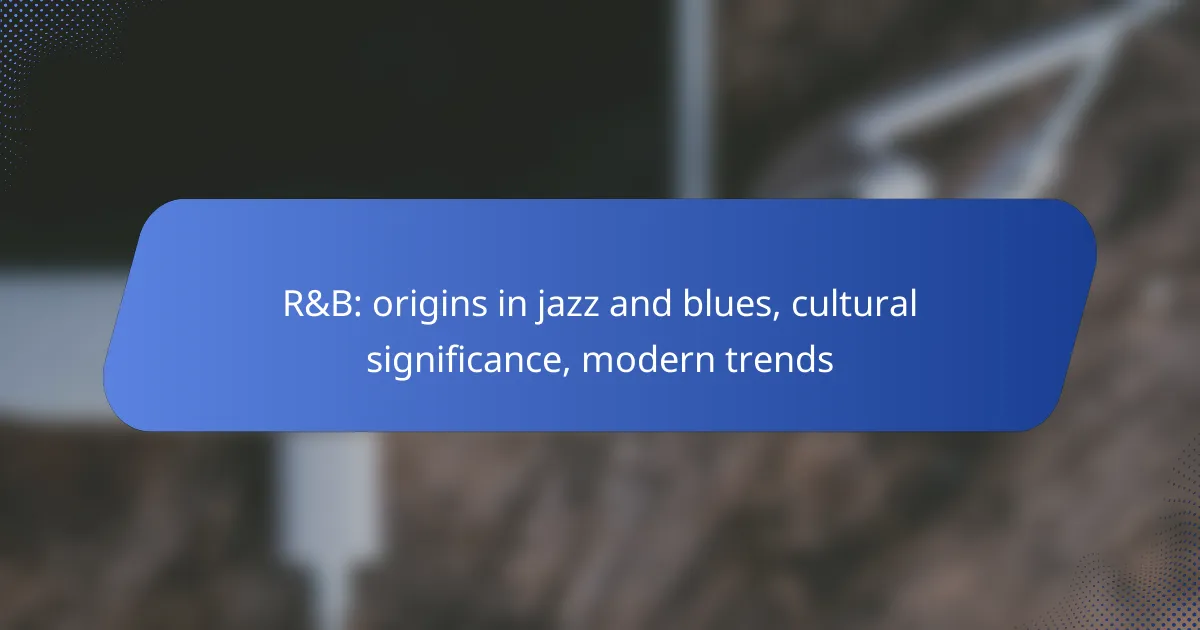The Blues genre is deeply rooted in African American history, capturing the struggles and cultural heritage of Black communities in the United States. Emerging from the experiences of African Americans during significant historical events like slavery and the Great Migration, Blues reflects a powerful form of emotional expression. The migration of African Americans to urban areas in the North facilitated a fusion of musical styles, leading to the evolution of Blues into a distinct and versatile genre that continues to resonate with diverse audiences today.

How did African American history shape the Blues genre?
African American history profoundly influenced the Blues genre, reflecting the struggles, emotions, and cultural heritage of Black communities in the United States. The genre emerged as a powerful form of expression, rooted in the experiences of African Americans from slavery through the Great Migration and beyond.
Origins in African musical traditions
The Blues has its roots in various African musical traditions, which were brought to America by enslaved Africans. These traditions included call-and-response patterns, polyrhythms, and the use of improvisation, all of which became integral to the development of the Blues. Instruments like the banjo, derived from African designs, played a significant role in shaping the sound of early Blues music.
As African Americans adapted their musical heritage to the new environment, they blended these elements with European musical influences, creating a unique genre that resonated with their lived experiences. This fusion laid the groundwork for the emotional depth and storytelling characteristic of the Blues.
Influence of slavery and oppression
The legacy of slavery and systemic oppression deeply impacted the themes and emotions expressed in Blues music. Enslaved individuals often used music as a means of coping with their hardships, conveying feelings of sorrow, resilience, and hope. The Blues became a vehicle for articulating the pain of loss and the struggle for freedom, reflecting the harsh realities of life under oppression.
As African Americans faced ongoing discrimination and economic challenges, the Blues served as a form of protest and a means of preserving cultural identity. This connection to historical suffering continues to resonate in the genre today, making it a powerful medium for social commentary.
Role of spirituals and work songs
Spirituals and work songs played a crucial role in the evolution of the Blues, providing a foundation for its lyrical content and musical structure. Spirituals, often rooted in religious themes, expressed hope and faith amidst suffering, while work songs were used to coordinate labor and alleviate the monotony of hard tasks. Both forms of music emphasized emotional expression and communal experience.
The transition from spirituals and work songs to the Blues marked a shift towards more personal storytelling, allowing artists to share individual experiences and emotions. This evolution highlights the importance of community and shared history in shaping the Blues as a genre that continues to reflect the African American experience.

What migration patterns influenced the development of Blues?
The development of Blues music was significantly influenced by migration patterns, particularly the movement of African Americans from the rural South to urban areas in the North. This migration facilitated the fusion of various musical styles, leading to the evolution of Blues as a distinct genre.
The Great Migration impact
The Great Migration, occurring from the early 20th century to the 1970s, saw millions of African Americans relocate from the South to cities like Chicago, Detroit, and New York. This mass movement was driven by the search for better economic opportunities and escape from racial segregation.
As these migrants settled in urban environments, they brought their musical traditions with them, blending Southern styles with new influences from diverse communities. This cultural exchange was crucial in shaping the sound and themes of Blues music.
Urbanization in Chicago and Detroit
In cities like Chicago and Detroit, the urbanization process transformed the social landscape, creating vibrant music scenes. The availability of venues and the rise of record labels in these cities provided platforms for Blues musicians to perform and record their music.
Chicago, in particular, became a hub for electric Blues, as musicians adapted their sound to fit the urban environment. The use of amplified instruments allowed for a new, powerful sound that resonated with audiences and influenced future genres like Rock and Roll.
Regional styles and adaptations
Blues music evolved into various regional styles, each reflecting the cultural influences of its environment. For example, Delta Blues retained a raw, acoustic sound, while Chicago Blues incorporated electric guitars and a more polished production.
These adaptations were not just musical; they also included lyrical themes that resonated with urban experiences, such as struggles with poverty and racial discrimination. This diversity within the genre highlights how migration and urbanization shaped Blues into a multifaceted art form.

How does Blues fuse with other music genres?
Blues fuses with various music genres by incorporating elements such as rhythm, instrumentation, and vocal styles, creating unique hybrids. This blending often results in innovative sounds that resonate across diverse audiences, showcasing the versatility of blues as a foundational genre.
Blues and Jazz integration
The integration of blues and jazz is characterized by the use of improvisation and complex chord progressions. Jazz musicians often draw on blues scales and motifs, allowing for expressive solos that reflect the emotional depth of blues music. Notable artists like Louis Armstrong and B.B. King exemplify this fusion, blending their styles to create timeless classics.
This combination has led to the development of subgenres such as jazz-blues, where the rhythmic complexity of jazz meets the soulful storytelling of blues. This synergy enriches both genres, allowing for a broader range of musical expression.
Blues-Rock crossover examples
Blues-rock emerged in the 1960s, combining the raw energy of rock with the emotional intensity of blues. Bands like The Rolling Stones and Cream popularized this crossover, incorporating blues riffs and structures into their rock sound. This fusion not only expanded the audience for blues but also influenced the evolution of rock music.
Key tracks such as “Crossroads” by Cream and “Jumpin’ Jack Flash” by The Rolling Stones showcase how blues elements can enhance rock music’s appeal. This genre blending continues to inspire contemporary artists, ensuring that the blues remains relevant in modern music.
Influence on Country music
The influence of blues on country music is evident in the shared themes of hardship and storytelling. Many early country artists, such as Hank Williams and Johnny Cash, incorporated blues elements into their music, utilizing similar chord progressions and lyrical styles. This connection highlights the cultural exchange between African American and rural Southern musical traditions.
As country music evolved, the blues’ impact remained significant, leading to the emergence of subgenres like country-blues. Artists like Chris Stapleton and Kacey Musgraves continue to draw on this rich heritage, blending bluesy melodies with country storytelling to create a unique sound that resonates with a wide audience.

What are the key characteristics of the Blues genre?
The Blues genre is characterized by its expressive emotional depth, distinct musical structures, and rich storytelling. Originating from African American communities, it blends various influences and often reflects themes of struggle, love, and resilience.
Common musical structures
Blues music typically follows a 12-bar structure, which consists of three lines of lyrics with a specific chord progression. This format allows for improvisation and variation, making each performance unique. The most common chord progression is the I-IV-V pattern, which provides a foundation for many classic blues songs.
In addition to the 12-bar format, variations such as the 8-bar and 16-bar structures are also used. These structures can create different moods and pacing, allowing artists to express a range of emotions within the genre.
Lyrical themes and storytelling
The lyrics of Blues songs often delve into personal experiences, addressing themes such as heartache, hardship, and social issues. Storytelling is a crucial element, with artists conveying their life stories or the struggles of their communities through their music.
Common motifs include love lost, economic hardship, and the quest for freedom. These themes resonate deeply with audiences, creating a powerful connection between the artist and the listener.
Instrumentation and performance style
Blues music typically features instruments such as the guitar, harmonica, piano, and bass. The guitar, often played in a fingerpicking style or with a slide, is central to the genre, providing both melody and rhythm. Harmonica adds a distinct sound, enhancing the emotional expression of the music.
Performance style in Blues is often characterized by a strong emotional delivery, with artists using vocal techniques like call-and-response and improvisation. This interactive element invites audience participation, making live performances particularly engaging.

What are the modern trends in Blues music?
Modern trends in Blues music reflect a blend of traditional elements with contemporary influences, showcasing a diverse range of styles and themes. Artists are increasingly experimenting with genres such as rock, jazz, and hip-hop, leading to innovative sounds that appeal to a broader audience.
Emergence of contemporary Blues artists
Contemporary Blues artists are redefining the genre by incorporating various musical styles and personal narratives. Musicians like Gary Clark Jr. and Joe Bonamassa are notable for their ability to fuse classic Blues with rock and soul, attracting new fans while honoring the genre’s roots.
Moreover, the rise of digital platforms has enabled emerging artists to share their music widely, leading to a more diverse representation within the Blues community. This accessibility allows for a greater variety of voices and stories, enriching the genre’s evolution.
Blues festivals in Australia
Australia hosts several prominent Blues festivals that celebrate both local and international talent. Events like the Byron Bay Bluesfest and the Melbourne International Blues Festival draw thousands of attendees, showcasing a mix of established and up-and-coming artists.
These festivals not only provide a platform for Blues music but also foster community engagement and cultural exchange. Attendees can enjoy workshops, jam sessions, and performances, making these events vital for the growth of the Blues scene in Australia.



